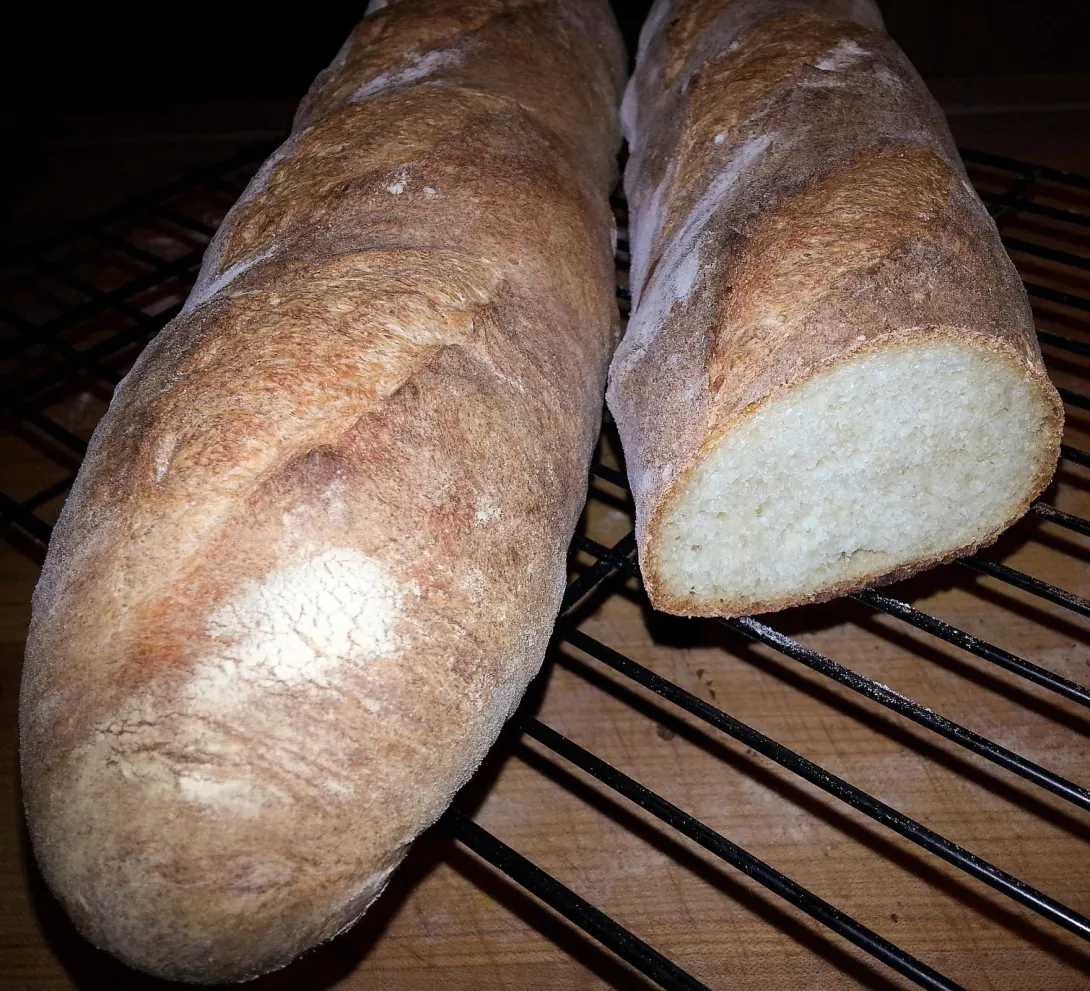
Using KA all purpose flour and this recipe for a year... https://www.kingarthurflour.com/baking/documents/baguette-ciabatta.pdf
I have been using this recipe for a year now and experimenting with the water which I normally add a bit more water than this recipe calls for.
Today I experimented with using half teaspoon less yeast so I could give it a longer rise time.... still no luck.
Please help
Is it the recipe? Do I need to switch to another recipe?
there looks to be about 64%. You could up that to 70-80% depending on how comfortable you are with wet dough handling.
I use about 75% Water these days and use the french kneading method which makes it quite easy to work with wetter dough.
I get an open crumb that way.
Excessive shaping will eliminate big bubbles of gas, and encourage a nice even crumb, which is what you have. So remember what you're doing now for when you want a great sandwich loaf.
For big uneven holes in your crumb, consider not shaping (folding and rolling) the dough at all. Cut the dough into longish pieces and stretch rather than roll it into a baguette length. I've seen this described as la ancienne in French bakeries. It will look rustic, because you haven't developed that nice tension on the skin, and there's no need to score it for the same reason (no tight skin to resist the oven spring).
Eventually you'll figure out how to make that tight skin without collapsing all the holes from your primary fermentation.
I agree that the hydration looks way low, and the gluten development may be low as well. If you go up to 73-75% hydration, mix the dough until is completely developed (8 min or so at a pretty high speed depending on your mixer), then don't shape (just cut and stretch) and don't proof (5 min on the bench while you get the pans ready). You will have something that approximates ciabatta. It should have lots of big irregular holes and a cell structure made of very shiny sheets of gluten. Once you get there you can back off in one or more dimensions and see if you can keep the hole development.
Note at the bottom of the formula:
One last note: Notice the “symmetry” of the ingredient amounts: equal amounts of flour and water (by weight) in the poolish, and in the dough, the same amount of water again, and double the amount of flour. This is the “classic” French formula for a baguette.
But the symmetry is not actually there. The "same amount of water again" is in fact dramatically less (2.75 oz in the dough vs 8 oz in the poolish). I suspect that there should be more water in the dough than the amount shown.
I agree with the above that higher hydration will give you what you want. I just want to caution against using too much bench flour when kneading, folding, shaping, etc. This will lover the hydration. Also don't degas too aggressively.
I went from having crumb exactly like yours in my bread, to having nice open crumb without altering hydration, by reducing my mixing time from 10 minutes to under 5 minutes. I also do some slap & folds, and handle it gently which I was not doing well previously.